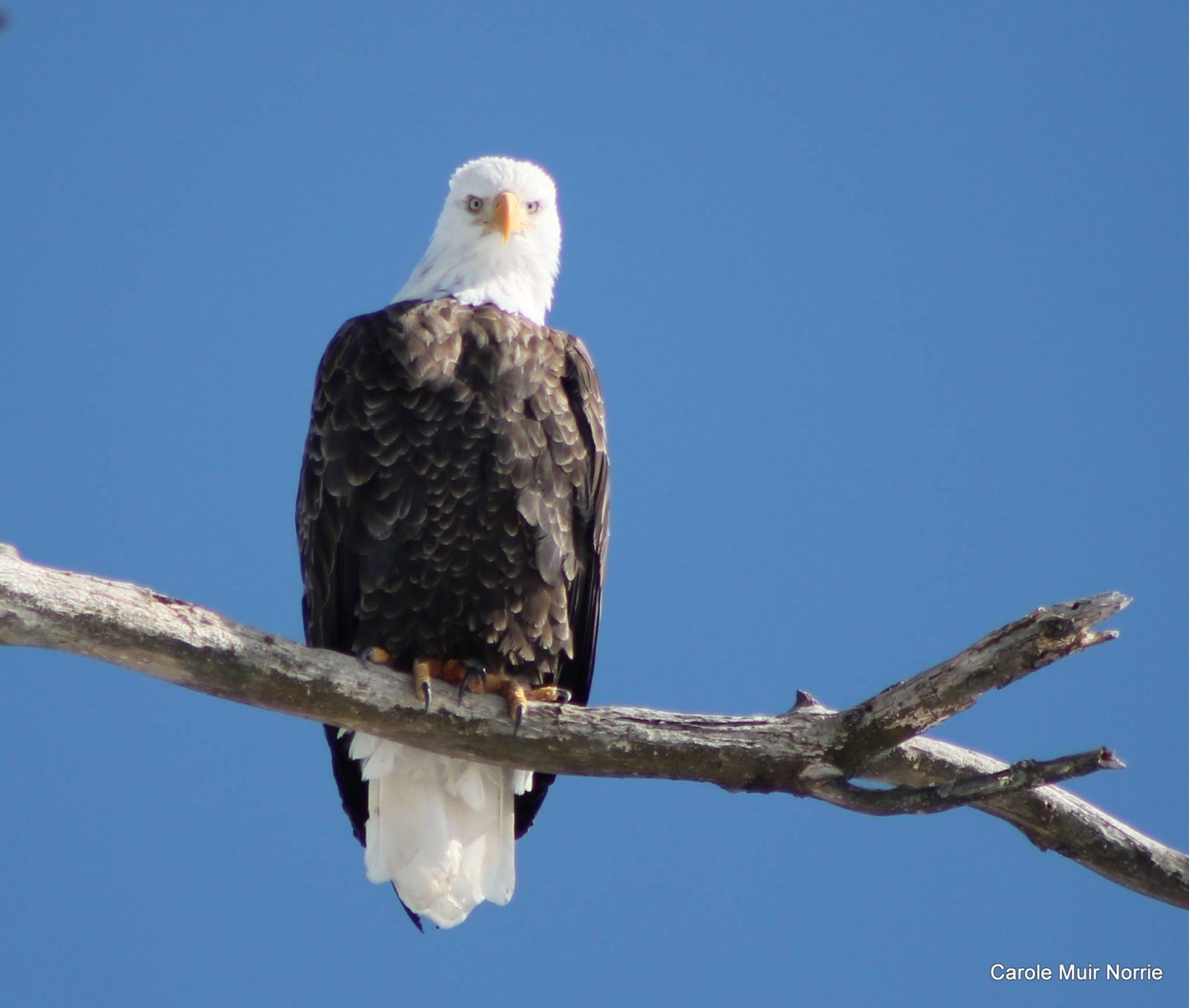More and more Townshippers are reporting sightings of bald eagles in the area, a resurgence of a species once on the endangered list.
“It’s a spectacular sight,” said Angela Losito, part of the Georgeville Audobon Christmas Bird Count.
“There are more than there were ten years ago,” she said.
Losito said that part of the reason they had been scarce was the prevalence of the pesticide DDT and the fact that many tall pines in the region, a preferred nesting spot for eagles, had been cut down.
Thanks to efforts to re-establish the population numbers are on the rise.
“They find a lot of carrion,” Losito said, which explains why bald eagles could find the region attractive. The high deer population in the Townships results in many being struck by vehicles; they in turn can serve as a consistent food source, Losito said.
Camille Dufresne, avid bird watcher and member of the Sherbrooke Christmas Bird Count, said that the group recorded 11 sightings of bald eagles on Saturday, Dec. 19, 2015.
“That’s the highest number of sightings recorded for the Christmas Count in all of Quebec,” She said.
Dufresne added that 2010-11 were also remarkable years with 10 and 11 sightings. The group usually only happens upon one or two per year during the count.
Preliminary data collected by the Quebec Breeding Bird Atlas marked a 390 per cent increase in the bald eagle population compared to numbers recorded in the previous atlas released roughly 25 years ago.
The atlas credits the banning of DDT, a reduction of PCBs and less illegal hunting for the thriving of the bald eagle as well as other diurnal raptors.
Dufresne said that the average bald eagle needs to consume at least 500 grams of food per day. If an opportunity presents itself, they can gorge themselves on twice that amount and spend the following few days digesting.
While they are widely known as birds of prey, Dufresne said they are also scavengers.
“They’ll eat whatever they can find,” she said.
Dufresne added that they usually live near bodies of water for easy access to their favourite food source; fish and aquatic birds.
With many bird watchers on the lookout, Dufresne said one friend reported seeing 12 eagles feasting on a dead animal near Compton. When she went to the specified location days later to see for herself, she saw five still working on the carcass, which at that point had much less meat left.
Carole Muir Norrie, from Ayer’s Cliff, also remarked an increase of bald eagles in the area.
“I see them daily,” she said.
“I’ve seen them go by with branches, but I’ve never seen a nest,” she said.
“They’ve been around for a long time,” she said, but agreed there are far more now than she could remember seeing years ago.
“Of course, we had birds back then that we don’t see now,” Muir Norrie pointed out.
“I’ve seen as many juveniles as adults,” she said, suggesting a promising future for new generations.
Muir Norrie said she managed to get a picture of a tagged bald eagle, but it was in motion so the numbers were too blurry to read. A friend of hers, however, managed to get a picture of a tagged eagle and reported it online. It turned out, the eagle was originally tagged in Maine.
Muir Norrie said she has had better luck with snow geese. She took a picture of one with a band and discovered it had first been logged in the year 2000, making the goose over 15 years old.
“You can see where they were born, and where they’ve been spotted,” she said.
The most recent sighting of a bald eagle in the Townships logged on the website Ebird was on Feb.22 in St. Armand.
According to postings on the People from the Eastern Townships Facebook page, Compton seems to be a hotspot for bald eagle sightings, but locals have reported seeing them in the View Point area of Lennoxville, Rock Forest, Way’s Mills and on Capleton Road towards North Hatley.
Thanks to preservation efforts, the once-in-a-lifetime opportunity to see a bald eagle soaring through the sky could become a more frequent occurrence.
The eagles have landed






